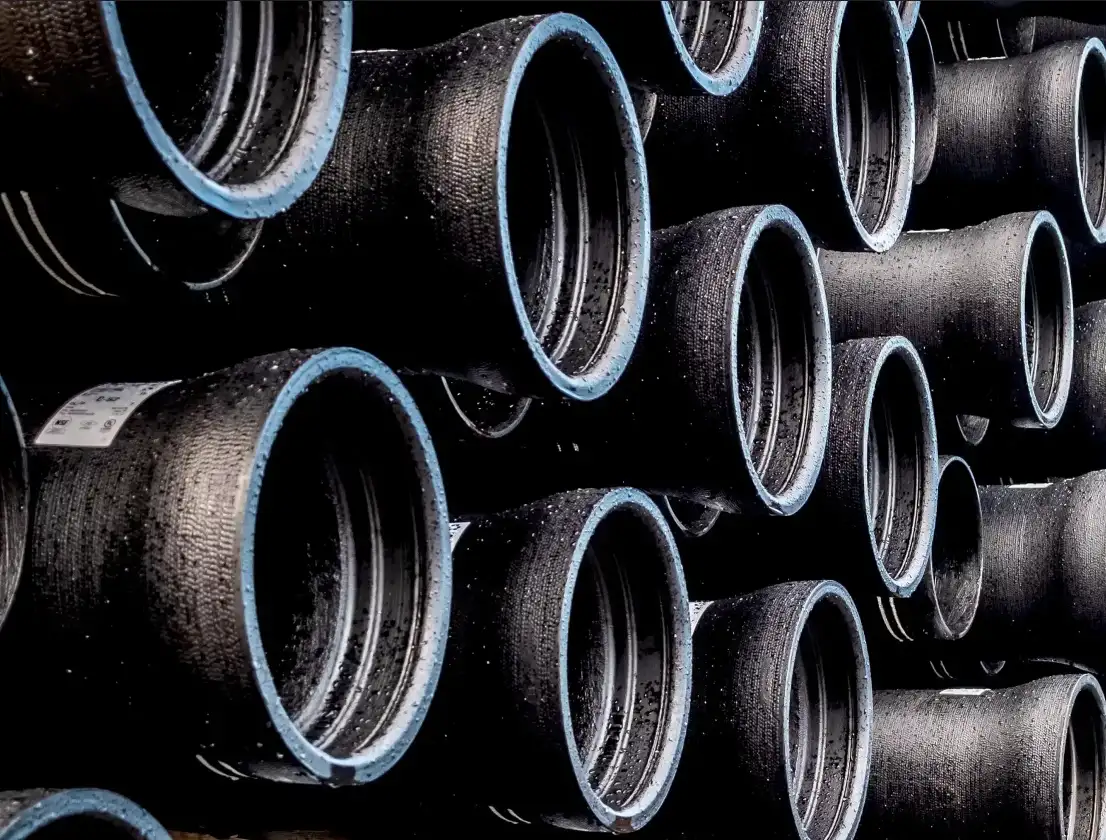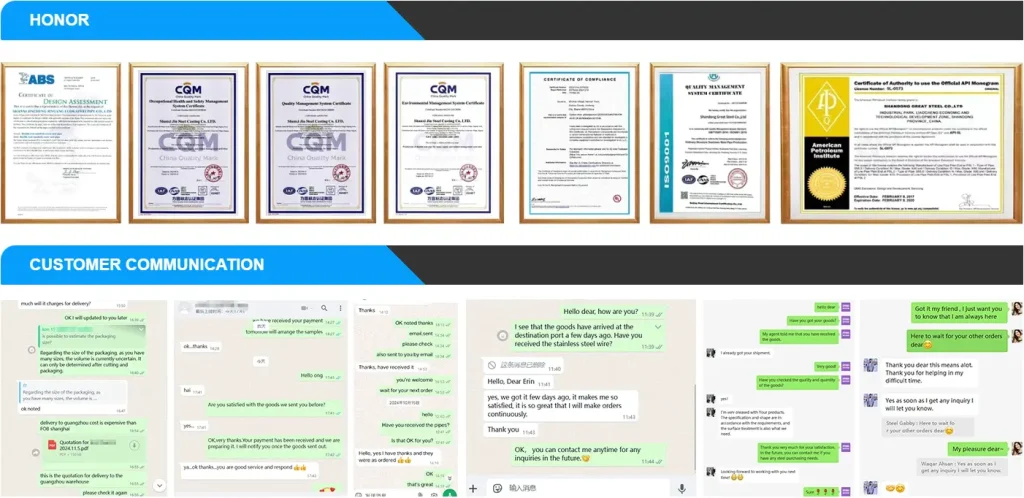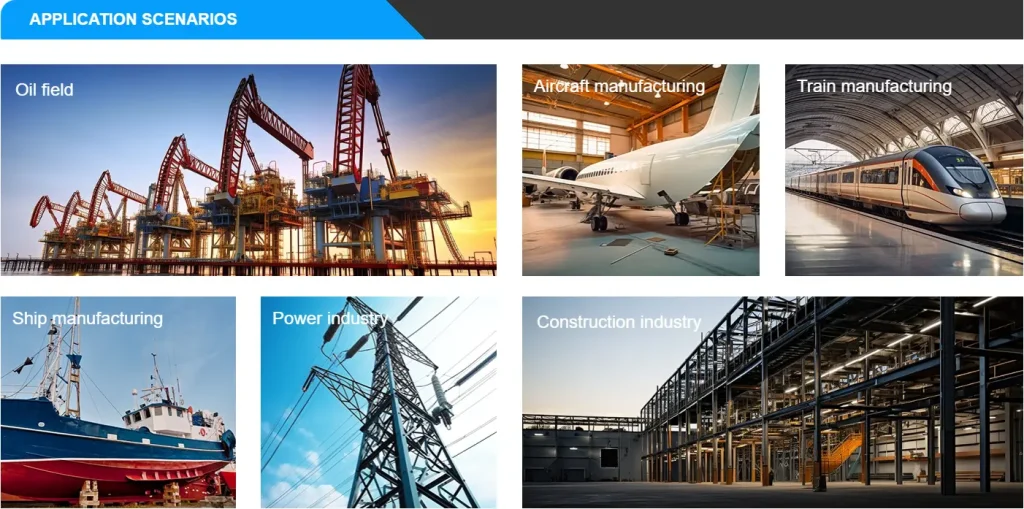We offer cement‑lined ductile iron pipe, engineered for superior performance in potable water, sewage, and industrial fluid systems. Leveraging nearly a century of proven design since 1922, our pipes combine ductile iron strength with cement‑mortar lining to provide corrosion resistance, smooth flow, and long service life—meeting diverse global infrastructure needs.
✅ Key Features & Benefits
-
Certified Lining: Cement‑mortar applied per ANSI/AWWA C104/A21.4 and DIPRA standards, suitable for potable, raw, reclaimed water and sewage systems.
-
Corrosion Prevention: The lining creates a high‑pH barrier and prevents tuberculation; cracks self-heal during water exposure.
-
Hydraulic Efficiency: Smooth interior yields Hazen‑Williams coefficient ≈ 140+, optimizing flow.
-
Temperature Tolerance: Up to 212 °F (100 °C); with asphalt coating limited to 150 °F.
-
Robust Mechanical Properties: High tensile strength and ductility resist ground shifts, vibrations, and pressure fluctuations typical in ductile iron pipes.
-
Standards Compliant: Meets AWWA, ISO 2531, EN 545/598, NSF 61 for potable use.
📐 Dimensions & Specs
| Nominal Size (DN / in) | OD (mm/in) | Wall Thickness (mm/in) | Lining Min. Thickness (mm/in) | Pressure Rating |
|---|---|---|---|---|
| 100 mm / 4″ | 118 mm / 4.8″ | 6.0 mm / 0.24″ | 1.6 mm / 1/16″ | 250 psi / CL250 |
| 150 mm / 6″ | 170 mm / 6.7″ | 6.3 mm / 0.25″ | 1.6 mm | 250 psi |
| 200 mm / 8″ | 222 mm / 8.7″ | 6.8 mm / 0.27″ | 1.6 mm | 250–350 psi |
| 300 mm / 12″ | 326 mm / 12.8″ | 7.2 mm / 0.28″ | 2.4 mm / 1/8″ | 250–350 psi |
| 450 mm / 18″ | 480 mm / 18.9″ | 8.6 mm / 0.34″ | 2.4 mm | up to 350 psi |
| 900 mm / 36″ | 945 mm / 37.2″ | 12.9 mm / 0.51″ | 2.4 mm | up to 350 psi |
*OD and thickness per ISO 2531/EN 545/EN 598 and AWWA C151.
*Cement lining thickness per AWWA C104 minimum standards.
🔍 Technical Data Table
| Property | Value / Standard |
|---|---|
| Lining Material | Portland cement‑mortar, ASTM C150 compliant |
| Application Method | Centrifugal for uniform thickness control |
| Seal‑coat Option | Available to retain moisture and reduce VOCs |
| Surface Roughness | Low friction, improved flow efficiency |
| pH Protection | High‑pH buffer prevents corrosion |
| Temperature Limit | 212 °F standard, ≤150 °F with asphalt coating |
| Flow Coefficient (C) | ≈140 (Hazen‑Williams) |
| Self‑healing Behavior | Autogenous crack repair in lining |
| Standards | ANSI/AWWA C104, ISO 2531, EN 545/598, NSF 61 |
⚖️ Comparisons with Other Types
| Feature | Cement‑Lined Ductile Iron | Bare Ductile Iron | Epoxy‑Coated | PVC/HDPE |
|---|---|---|---|---|
| Corrosion Resistance | Excellent (pH barrier) | Moderate | Good | Very good |
| Flow Efficiency | High (C≈140) | Moderate | High | Highest |
| Mechanical Strength | Very High | Very High | High | Low–Moderate |
| Temperature Rating | Up to 212 °F | Up to 400 °F | ~150 °F | ~140 °F |
| Lifespan | 75+ years | 75+ years | 50–75 years | 25–50 years |
| Cost | Mid–High | Mid | High | Low–Mid |
💱 Global Price Comparison (per tonne)
| Region | Supplier / Grade | Price (USD/tonne) | Notes |
|---|---|---|---|
| China (Shandong) | K9 ISO 2531 | 400–700 | Varies by volume & spec |
| China (Global) | K9 export grade | 605–670 | Bulk discounts apply |
| UK/Europe | ISO 2531 standard | 1050 | Includes certification |
| USA | Domestic AWWA gauge | ~900–1200 | Includes US pipe manufacturer list prices |
| Alibaba average | Various classes | 620–760 | Based on MOQ ~1 ton |
🔧 Usage & Applications
-
Municipal water mains – optimum for drinking water networks due to corrosion resistance.
-
Wastewater/sewage – suitable if specified; lining protects structural integrity.
-
Industrial systems – ideal where flow efficiency, pressure, and temperature tolerance are critical.
-
Fire protection – flanged/jointed variants available for fire systems up to 250 psi.
🛠 Installation & Maintenance
-
Connections: Tyton push-on, restrained, Flanged, Fastite joints provide leak-proof coupling.
-
Preparation: Ensure pipe and trench bedding comply with AWWA C600.
-
Handling: Avoid interior damage; minor lining cracks are self-healing in service.
-
Inspection: Visual and flow testing recommended post-installation.
-
Repair: Lining patch procedures per DIPRA bulletins are available for field restoration.
📚 FAQ
-
Why cement‑mortar lining?
It forms a high‑pH barrier and resists tuberculation while providing smooth flow––preferred since 1922. -
Can piping cracks in lining self-repair?
Yes, through autogenous healing; cracks close and re-bond after weeks of water exposure. -
Difference between standard and double lining?
Standard meets AWWA C104. Double lining gives extra thickness for aggressive sewage or industrial fluids. -
Maximum safe fluid temperature?
Up to 212 °F for cement lining; asphalt-coated products are limited to 150 °F. -
How long is life expectancy?
Properly installed and maintained, lifespan can exceed 75 years—common in long-term water infrastructures.
We believe our cement‑lined ductile iron pipes offer unmatched combination of strength, corrosion resistance, hydraulic performance, and global compliance. Designed for ease of installation and regulated durability, they are ideally suited for modern infrastructure projects. Please contact our team for tailored specs, volume pricing, and technical support.







